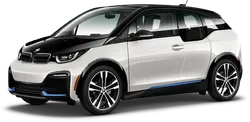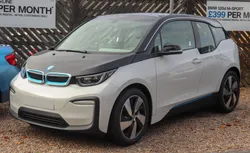

BMW i3 Generation 1 I01 Facelift 2017
Explore the features and specifications of the BMW i3, focusing on the Generation 1 I01 Facelift 2017 model, available in Portugal for enthusiasts and buyers alike.
The BMW i3, a trailblazer in the realm of electric vehicles (EVs), made its debut in 2013 as part of BMW's i Series. The facelifted version, known as the Generation 1 (I01) facelift of 2017, marked an i...
Technical Specifications
Select Version
Dimensions
Engine
Driving
Others
History and Features
Mycarro AI
Apr 26, 2025
The BMW i3, a trailblazer in the realm of electric vehicles (EVs), made its debut in 2013 as part of BMW's i Series. The facelifted version, known as the Generation 1 (I01) facelift of 2017, marked an important evolution in the car's design, technology, and overall performance. As the world moves towards renewable energy sources and sustainable practices, the BMW i3 stands out as a model that embodies this transition while maintaining the luxurious feel that the BMW brand is known for.
Design and Aesthetics
The 2017 facelift of the BMW i3 brought some notable changes in its exterior design that refined its distinctive aesthetics. Although the fundamental design remained largely unchanged, BMW introduced new front and rear bumpers, which contributed to a sleeker appearance. The car also featured updated LED headlights and taillights, providing enhanced visibility and modern styling cues. The optional 20-inch wheels added a sportier note to the i3's signature look while retaining its eco-friendly charm. With these changes, the i3 maintained its challenge towards conventional automotive design by using sustainable materials that reduce the vehicle's carbon footprint.
Interior Quality and Technology
Inside, the BMW i3 2017 facelift highlighted BMW's dedication to eco-consciousness without skimping on luxury. The cabin remained spacious and airy, equipped with high-quality, sustainable materials such as recycled plastics, natural fibers, and leather alternatives sourced from renewable materials. The facelift version offered upgraded infotainment options, including a larger 10.25-inch touchscreen display and a revamped iDrive system, which enhanced usability. The incorporation of smartphone integration via Apple CarPlay added modern connectivity features, making the i3 a tech-savvy option for environmentally conscious consumers.
Performance and Powertrain
Under the hood, the 2017 facelifted i3 displayed notable improvements in performance. While it retained the electric motor delivering 170 horsepower and 184 lb-ft of torque, BMW introduced the i3s variant, which gave drivers a sportier experience. The i3s featured a more powerful motor, producing 184 horsepower, and sport-tuned suspension for better handling. This enhanced performance allowed the i3, both standard and sport models, to accelerate from 0 to 60 mph in approximately 7.2 seconds – a remarkable figure for an electric vehicle, placing it ahead of many competitors in the compact EV segment.
Battery and Range
The electric range of the BMW i3 also received a significant upgrade in 2017 with the introduction of a larger 94 Ah battery. This new battery boosted the i3’s electric range to approximately 153 miles on a single charge, addressing one of the common concerns of electric vehicle consumers: range anxiety. Additionally, the range-extended model, equipped with a small gasoline generator, enabled drivers to have a backup power source, extending the driving range even further and assuring peace of mind on longer trips.
Driving Experience
The driving experience of the 2017 BMW i3 is characterized by an agile and nimble handling that stands out in the electric vehicle marketplace. Its lightweight construction, primarily due to its carbon fiber-reinforced plastic body, contributes to impressive performance dynamics while maximizing energy efficiency. The regenerative braking system allows for energy recovery during braking, improving overall efficiency. The electric power steering further enhances precision, providing a sense of control when navigating urban environments or winding roads.
Market Impact
Upon its release, the BMW i3 Generation 1 (I01) facelift of 2017 cemented itself as a pivotal player in the expanding electric vehicle market. As consumers became increasingly aware of climate change and its implications, the emphasis on eco-friendly transportation grew. The BMW i3 appealed to this demographic by offering an innovative alternative to traditional vehicles while maintaining the luxury ethos of the brand. The growing interest in electric mobility led to increased sales and brand loyalty, helping support BMW's position in the EV segment.
Conclusion
In conclusion, the 2017 facelift of the BMW i3 Generation 1 (I01) is a well-rounded electric car that combines sustainability with performance and luxury. The updates made in the facelift addressed previous limitations while maintaining the vehicle's original spirit. As the automotive landscape shifts towards electrification, the BMW i3 continues to pave the way for future innovations while redefining what an electric vehicle can achieve in terms of design, comfort, and driving pleasure.
